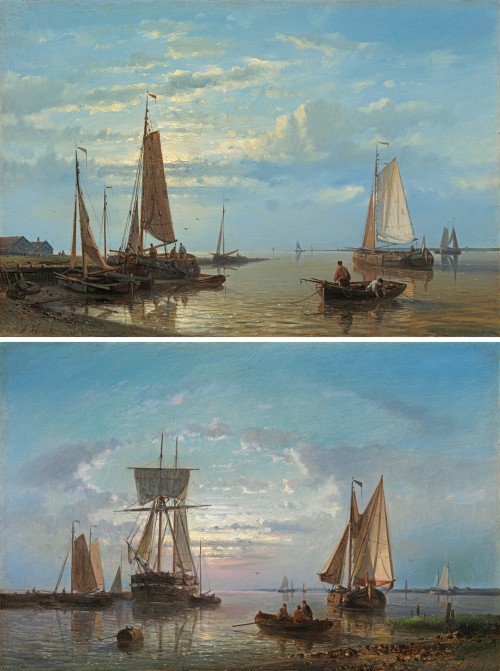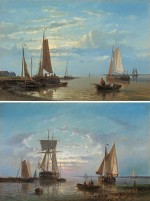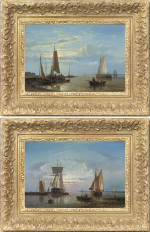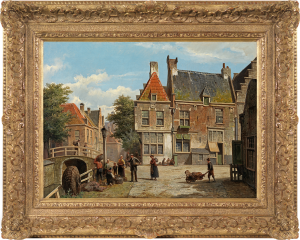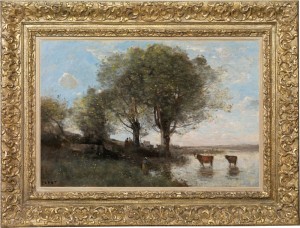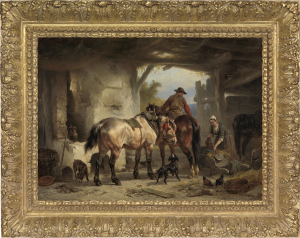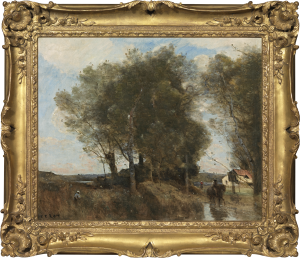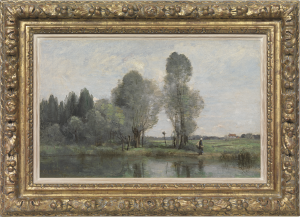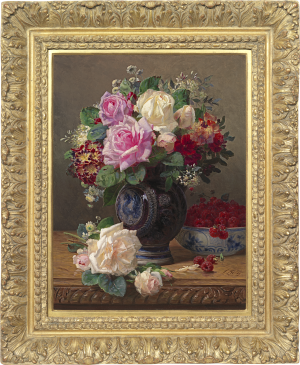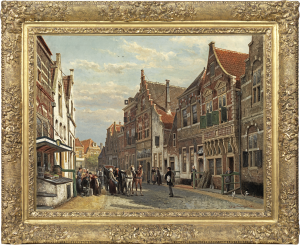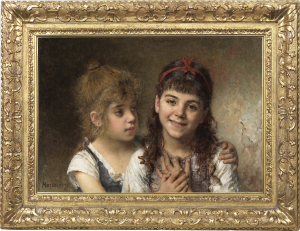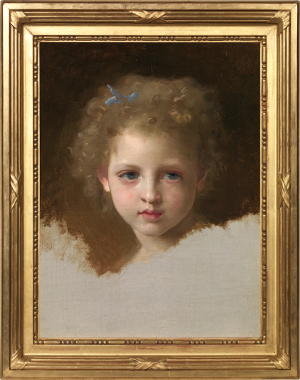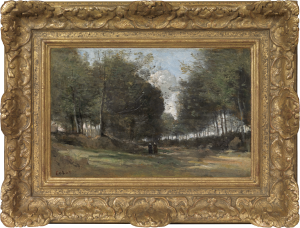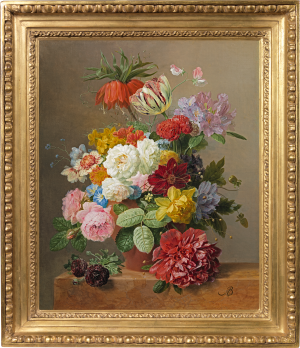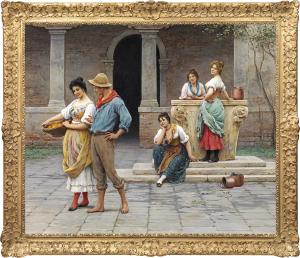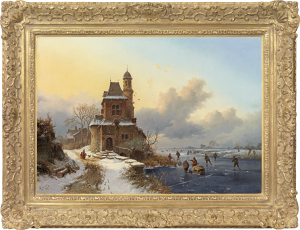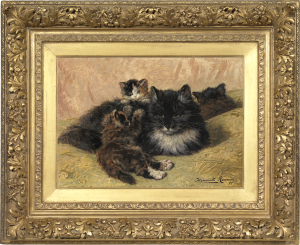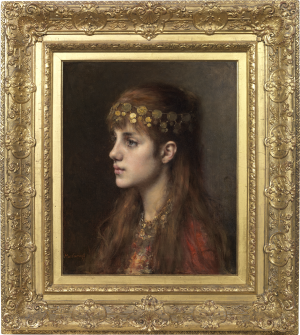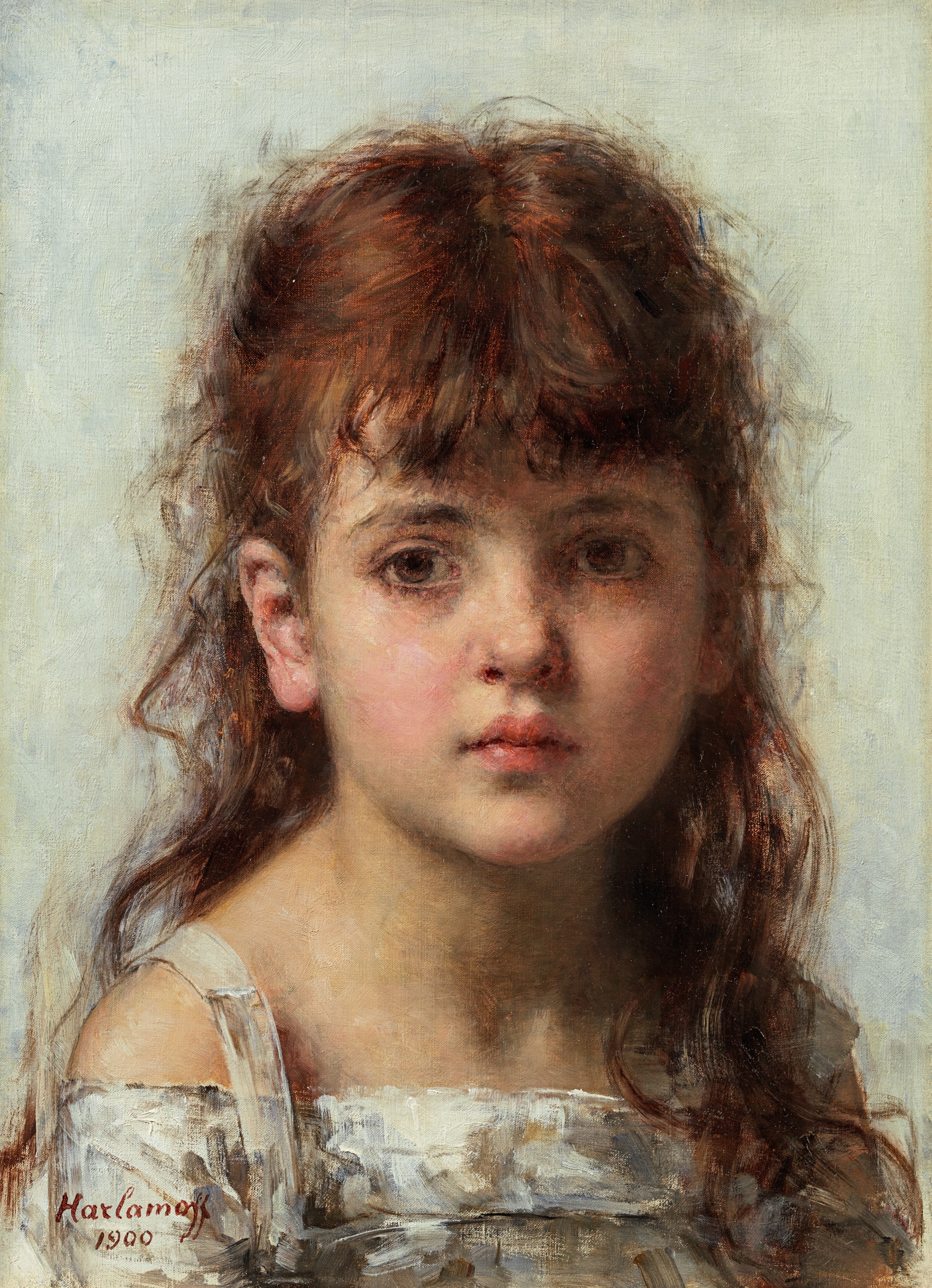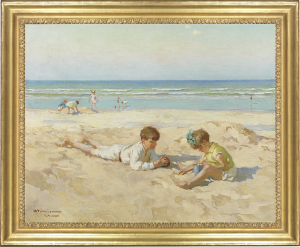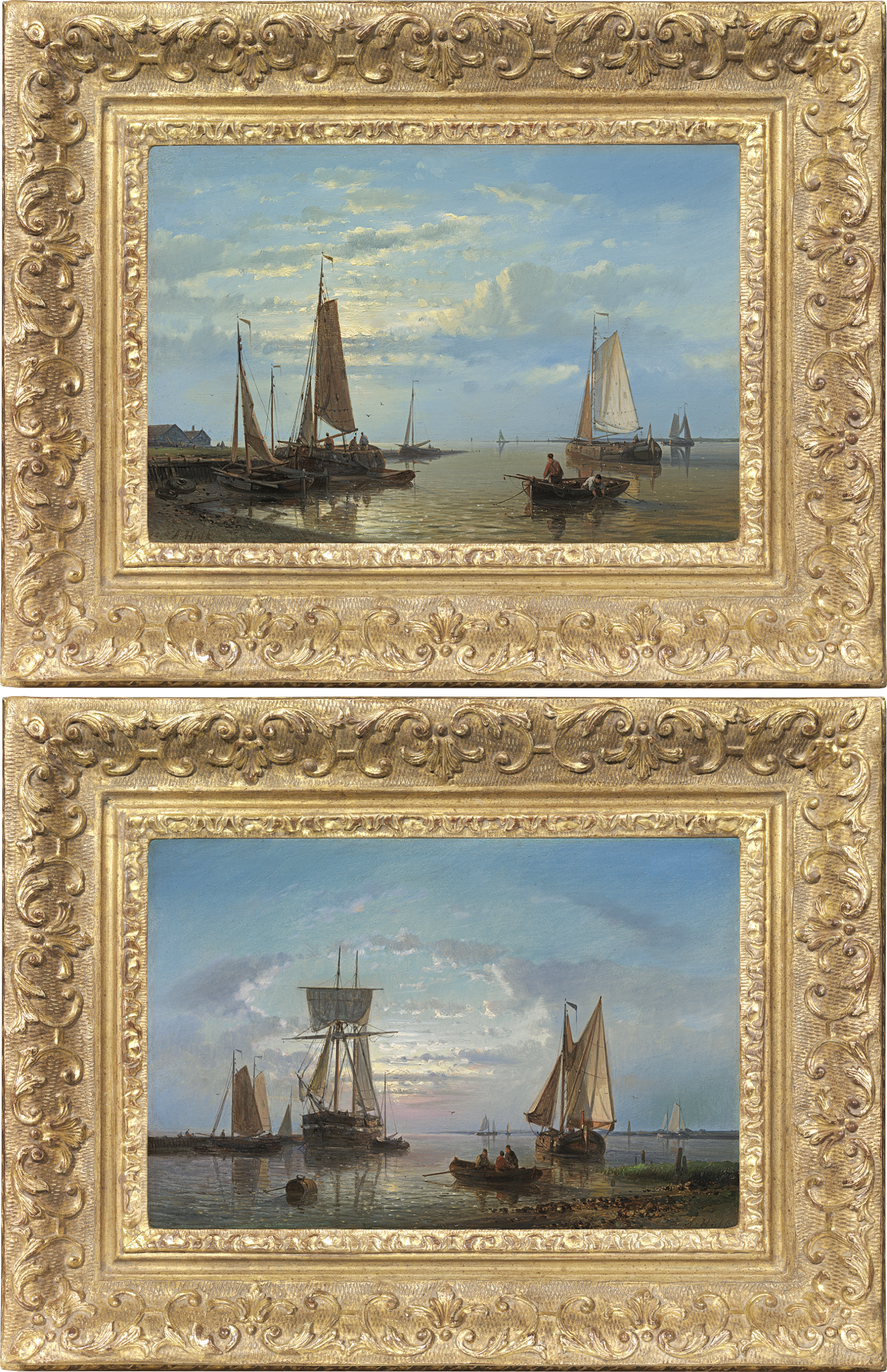Abraham Hulk Snr
On the Scheldt, low tide: On the Scheldt, sunset
Oil on panel: 8 x 12 (in) / 20.3 x 30.5 (cm)
Signed, a pair
This artwork is for sale.
Please contact us on: +44 (0)20 7493 3939.
Email us
ABRAHAM HULK SNR
Amsterdam 1813 - 1897 London
Ref: BZ 119
On the Scheldt, low tide
On the Scheldt, sunset
A pair
The former signed lower left: A Hulk;
the latter signed lower right: A Hulk
Oil on panel: 8 x 12 in / 20.3 x 30.5 cm
Frame size: 14 x 18 in / 35.6 x 45.7 cm
Painted circa 1880
Provenance:
MacConnal-Mason, London;
private collection, UK
Abraham Hulk Snr stands in the great tradition of Dutch sea painting. The high degree of finish in his work, understanding of light and subtle response to changing weather derives from masters such as Salomon van Ruysdael (1600/3-1670) and Willem van de Velde the Younger (1633-1707) and parallels that of his contemporaries like as Johannes Hermanus Koekkoek (1778-1851). Hulk grew up in the great port of Amsterdam and spent an adventurous period in America from 1833 to 1835, initially supporting himself as a ship’s painter – of real ships, not yet as an artist portraying ships[1].
Returning to Amsterdam, Hulk abandoned his specialization in portraiture in favour of marine painting, which brought him prosperity, especially when he moved to England in 1875. A keen sailor, who made many expeditions on the Zuiderzee, he thoroughly understood marine life and the intricacies of sailing ships. Shore scenes like the present pair are a favourite theme, one also favoured by van de Velde. In each work, the sky fills two-thirds of the composition, intricately fretted with clouds to give a sense of energy. On the Scheldt, low tide is filled with golden morning light. In its pair, On the Scheldt, sunset, the pale orange and pink of the declining sun, hidden behind clouds, flushes the bay and the sails of the fishing boats with its warmth. Both paintings exhibit the pervasive sense of tranquillity and tonal harmony for which the artist was renowned. Hulk turns everyday views of the maritime life that was so crucial to the Dutch economy into scenes of romantic reverie.
Hulk moved to London in 1875 and found success in a burgeoning industrial nation with a taste for Dutch marine painting, both Old Master and modern. He frequently produced pairs of paintings, often comparatively small in format and on panel, in homage to the cabinet paintings of the seventeenth century Netherlandish masters. Panel also afforded him the high degree of finish that he wished to achieve in his oils.
ABRAHAM HULK SNR
Amsterdam 1813 - 1897 Zevenaar
Abraham Hulk Snr specialized in marine subjects and Dutch estuary scenes, inspired by the coastal waters of The Netherlands. He showed a particular talent for capturing the effects of calms and storms. Abraham was the senior and most important member of the Hulk family of artists, which also included his brother Johannes (1829-1911), an animal painter, and his sons Hendrick (1842-1937), a marine painter, Abraham Jnr (1843-1919) and William (1852-1906), both landscapists.
Born in London in 1813, the son of a Dutch textile merchant, Hulk grew up in Amsterdam. He studied at the Amsterdam Academy with the portraitist Jean-Augustin Daiwaille (1782-1850). From 1833 he was in America, travelling to Boston and New York, eking out a living as a portrait painter and writing a lively travel diary. The many voyages that Hulk took, as well as his early life in the port of Amsterdam, influenced his decision to become a marine painter after returning to that city in 1835 and marrying Maria van der Meulen (1808-1875) the same year. He sent his first seascape to the Amsterdam Exhibition of Living Masters in 1836 and exhibited also in The Hague and Leeuwarden. A restless soul, Hulk lived in Amsterdam, Nijkerk, Enkhuizen, Haarlem and Oosterbeek. He owned a sailing boat and excursions on the Zuiderzee provided endless inspiration for his marine views.
In 1862 Hulk was made an honorary member of the Imperial Academy of St Petersburg. In 1875 he settled in London, taking advantage of a strong English clientèle for his Dutch marine scenes. He lived in a handsome house at 42 Mornington Road, St Pancras from 1875 to c.1890. Hulk exhibited at the Royal Academy in 1876 and 1890 and at the Society of British Artists’ Suffolk Street galleries. Hulk died in Zevenaar in 1897 while visiting his son-in-law Carl Wesper.
The work of Abraham Hulk Snr is represented in the Amsterdam Museum; the Zuiderzeemuseum, Enkhuizen; the Teylers Museum, Haarlem; the Gemeente-Archief, Dordrecht; the Ferens Art Gallery, Hull; the Towneley Art Gallery, Burnley and the Cooper Art Gallery, Barnsley.
[1] For a detailed biography of Hulk and his time in America, see Matthew Honan, ‘De kunst van Abraham Hulk en zijn dagboek naar America’ (The art of Abraham Hulk and his travel diary to America), Scheepshistorie, Issue 26, November 2019, pp.92-109. We are grateful to Dr Honan for details of Hulk’s life and for providing a translation of the article.

